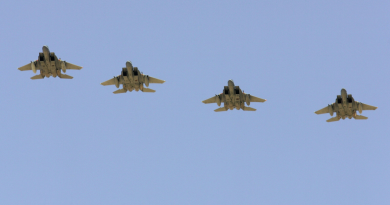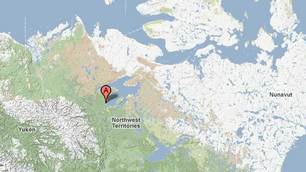Winnipeg Art Gallery offers sneak peek of Qaumajuq Inuit art centre
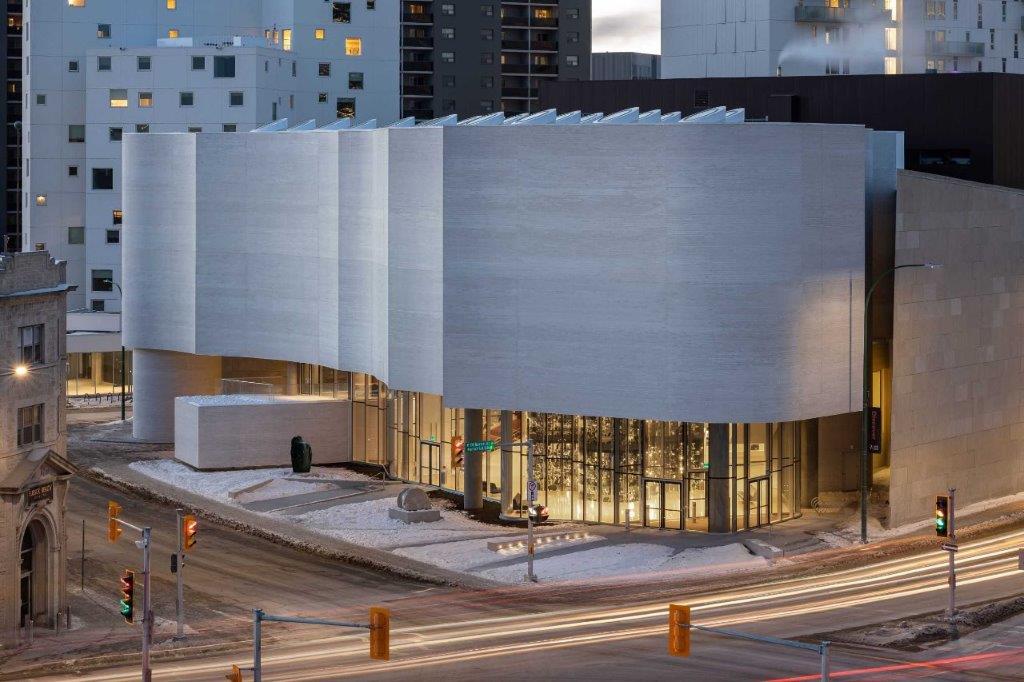
Stymied by the pandemic in their plans to throw a big opening party to celebrate the unveiling of the world’s largest museum of Inuit art, officials at the Winnipeg Art Gallery offered journalists a virtual tour of the art centre on Thursday.
Qaumajuq, the Inuit art centre, is slated to open to the public on March 27.
Meaning “it is bright, it is lit” in Inuktitut, Qaumajuq (pronounced as KOW-ma-yourq or HOW-ma-yourk) is billed as “the first art museum of its kind, bringing Inuit voices to the forefront, and dedicated to the art and culture of Inuit from Canada and beyond.” Its collection boasts 14,000 pieces of artwork by Inuit artists.
The new white stone building connects to the existing 1971 WAG limestone building by Gustavo da Roza on all four levels, creating a 185,000-square-foot (17,187 sq. metres) cultural campus in downtown Winnipeg .
Designed by Michael Maltzan Architecture, the 36,000-square-foot (3,344 sq. metres) addition and 16,000-square-foot (1,486 sq. metres) renovation includes new galleries, classrooms, art studios, an interactive theatre, research areas, main floor shop and cafe, plus a glass art storage vault that houses a portion of the Gallery’s Inuit art collection.
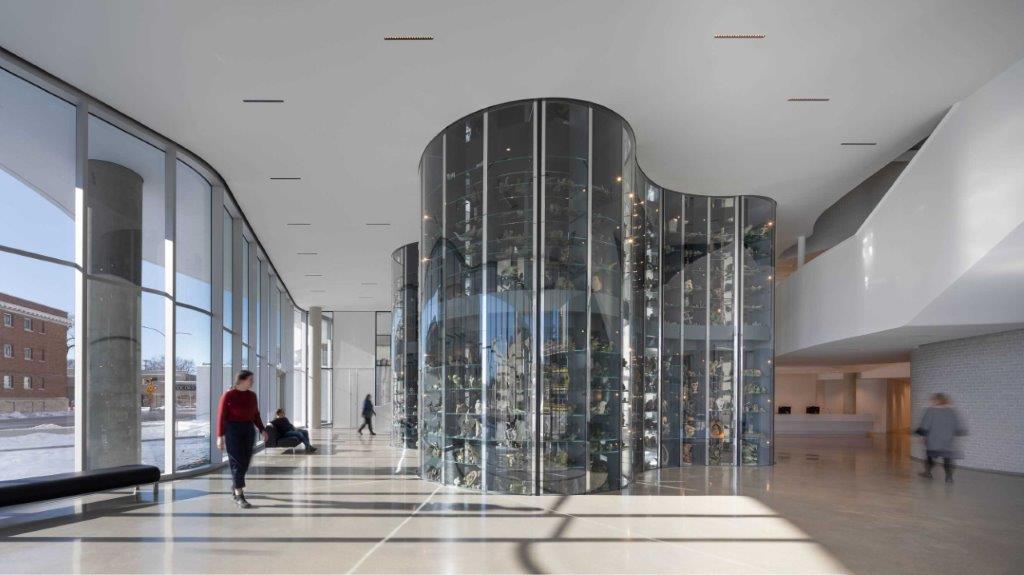
Speaking via videoconference link, Michael Maltzan said he had to overcome several conceptual challenges when designing the new building as he sought to create a more accessible space for the community while finding the right stylistic fit with the existing WAG building.
“But really the biggest challenge in the beginning was to try to imagine a building that would capture the incredible spirit of the people and the place of the North,” Maltzan said.
“What was the right form to honour that culture and its traditions and its history? But just as importantly to imagine a building in a form and a series of spaces that would be able to support that culture and that work, those artists as they continue to go forward into the future.”
Speaking to reporters from one of the exhibition halls of the new museum, Stephen D. Borys, the director and CEO of the WAG and Qaumajuq, said WAG will be looking at celebrating the new Inuit art centre beyond the opening weeks for the entire year with a number of programs and events “that will make everyone feel like it’s their very first visit.”

The museum has big plans to bring its exhibitions to Inuit communities across Inuit Nunangat, said Borys.
“As you know the WAG’s collection of Inuit art is close to 14,000 objects, but we also have on long-term loan from the government of Nunavut their fine art collection of about 74 hundred works,” Borys said. “The plan is and we have an agreement with the government of Nunavut to make sure that we can organize shows here that are meant to travel to the communities in the North and actually across Inuit Nunangat.”
Qaumajuq will also be a destination for curatorial training and learning for cultural workers, offering mentorships and internships, and building bridges with cultural centres across the North, Borys added.
“And, of course, it’s our goal and our wish that when a cultural or heritage centre is built in the North that these objects on loan to us from Nunavut will be returned and displayed there,” Borys said.
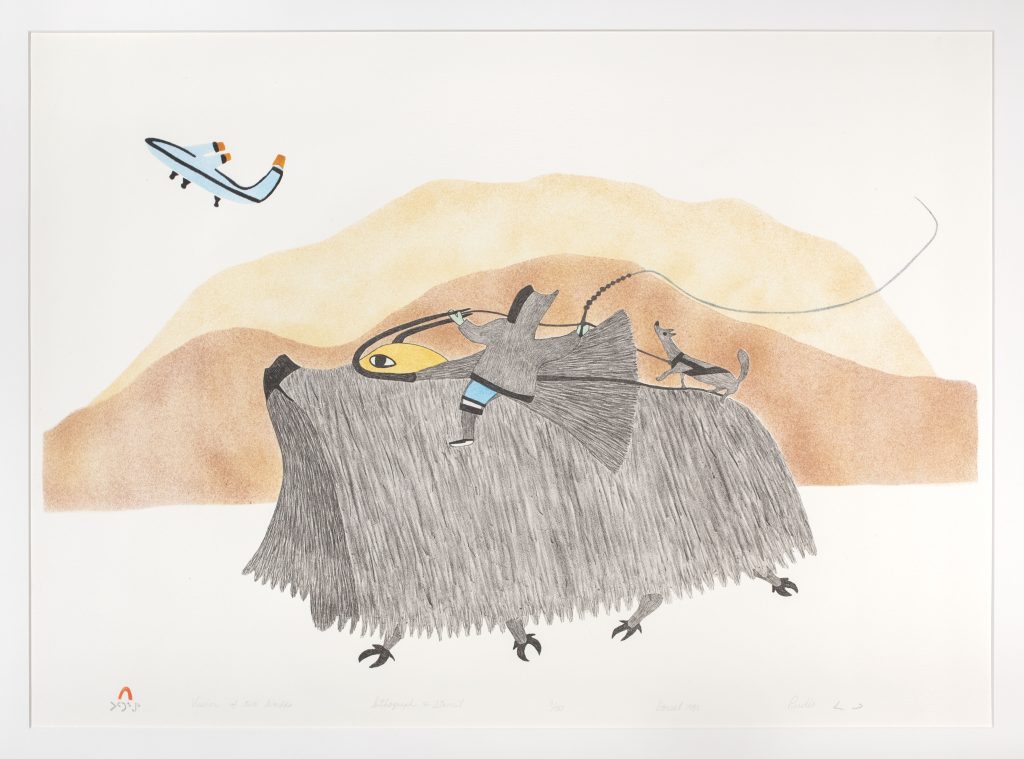
Qaumajuq’s inaugural exhibition, INUA, brings together a wide range of work by 90 Inuit artists. The show is featured in Qilak, the 8,000-square-foot Inuit gallery.
INUA was curated by an all-Inuit team representing the four regions of Canada’s Inuit homeland known as Inuit Nunangat.
Heather Igloliorte, co-chair of the WAG’s Indigenous Advisory Circle and the lead curator of INUA, said “there is a lot of really astounding contemporary art” at the museum and she hopes the new centre will propel modern Inuit art even further ahead.
“I think when Inuit artists get to be in this space and imagine their own work here, I think we’re going to see some dramatic changes and movements forward in Inuit art,” Igloliorte said.
Related stories from around the North:
Canada: Winnipeg Art Gallery in Canada plans huge outdoor art projection in run up to Inuit art space opening, Eye on the Arctic
Finland: Sámi-themed Finnish short film makes Sundance lineup, Yle News
Greenland: `Enough of this postcolonial sh#%’ – An interview with Greenlandic author Niviaq Korneliussen, Eye on the Arctic
Iceland: Icelandic artist Olafur Eliasson lights up London’s Tate Modern, Blog by Mia bennett
Norway: Walt Disney Animation Studios to release Saami-language version of “Frozen 2”, Eye on the Arctic
Russia: Russia’s Arctic culture heritage sites get protection, The Independent Barents Observer
Sweden: Sweden, Norway team up to preserve ancient rock carvings, Radio Sweden
United States: Set of Indigenous Yup’ik masks reunited in Alaska after more than a century, CBC News

